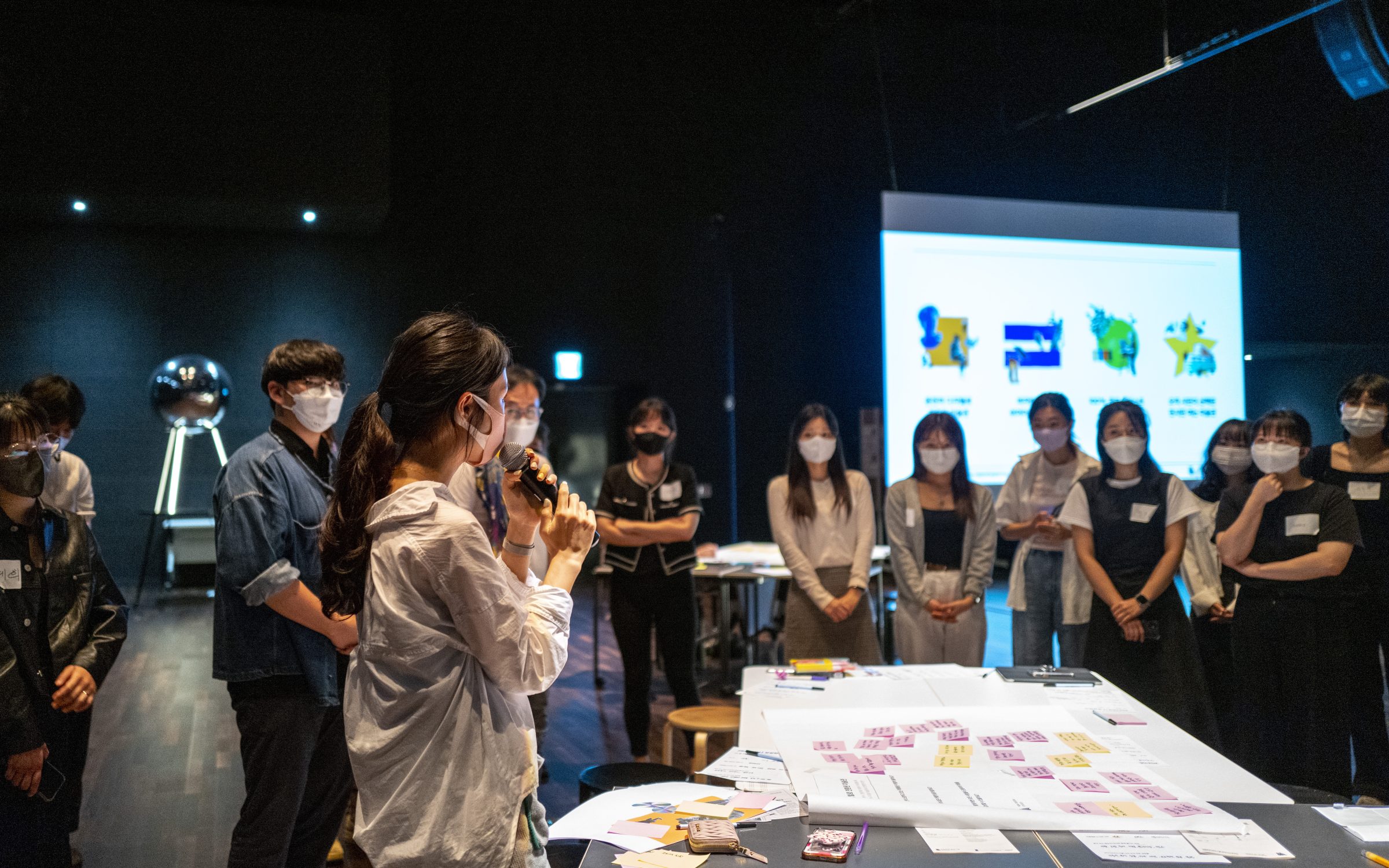
Master's Thesis
How Did It Evolve? Developing a Policy Design Experiment for Sustainability Transitions of a National Museum of Modern and Contemporary Art
어떻게 발전했나? 국립현대미술관의 지속가능한 전환을 위한 정책 디자인 실험 개발 과정
As museums and cultural institutions have responded to the environmental challenges posed by the climate crisis, they have become critical arenas in driving sustainable design practices. Designers can contribute to those communities for sustainability transitions on multiple scales of society and various timelines by using their creative and decisive agency. However, there needs to be more practical knowledge of the design approaches for operationalizing sustainability transitions of such institutions.
This thesis presents a multi-layered account of the development process of a policy design experiment for sustainability transitions at the National Museum of Modern and Contemporary Art in South Korea. The author retrospectively traced the entire process, conducted interviews with the project team members, including the director and student designers, and performed a thematic analysis to identify how the process could evolve.
The findings suggest that the process of a policy design experiment for sustainability transitions of a public art museum follows a non-linear and complex process intertwined with multiple design activities. This research’s insights can inspire design researchers, practitioners, museums, and cultural institutions seeking systemic and long-term innovation for sustainability.
박물관과 문화기관은 기후 위기로 인한 환경 문제에 대응하기 시작하며 지속 가능한 디자인 실천을 주도하는 중요한 무대가 되었다. 디자이너는 고유의 창조적, 결정적 힘을 이용하여 다양한 사회 규모와 시간 범위에 있어 지속가능한 전환을 지향하는 커뮤니티에 기여할 수 있다. 그러나 기관의 지속가능한 전환 운용을 돕기 위한 디자인 접근에 대한 더욱 실질적인 지식이 필요하다.
이 논문은 국립현대미술관의 지속가능한 전환을 위한 정책 디자인 실험의 발전 과정에 대해 다층적 설명을 제공한다. 저자는 디자인 전 과정을 회고적으로 따라갔고, 디렉터와 학생 디자이너들을 포함한 프로젝트 팀원들과 인터뷰를 진행했으며, 디자인 과정이 어떻게 발전했는지 주제 분석(thematic analysis)을 통해 확인했다.
연구 결과, 공공 미술관의 지속가능한 전환을 위한 정책 디자인 실험 과정은 다양한 디자인 활동과 뒤얽혀 비선형적이며 복합적인 과정을 따라갔다. 이 연구의 통찰은 지속가능성을 위한 시스템적/장기적 혁신을 추구하는 디자인 연구자와 디자인 실무자, 박물관/미술관, 문화기관 등에 영감을 줄 수 있을 것이다.
